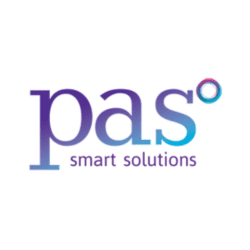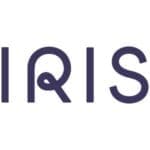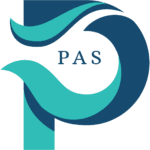 In our practice, as a consortium of experienced hospitality, real estate and investment consultants, Morgensheer Hospitality Inc., receive numerous inquiries from developers and sponsors, seeking investors for ground-up hospitality development projects, both domestic and international.
In our practice, as a consortium of experienced hospitality, real estate and investment consultants, Morgensheer Hospitality Inc., receive numerous inquiries from developers and sponsors, seeking investors for ground-up hospitality development projects, both domestic and international.
While the inquiries originate from experienced developers with proven track records either in the upscale residential, hospitality and/or mixed-use categories; the presentations are inadequate. Specifically, the presentations (offering memo/deck) lack the critical elements required to entice potential investors. Oftentimes, the presentations or setups do not take into consideration the criteria of hospitality brands (operator/flag). The latter is critical if the project requires hospitality management/operations. Having a strong operator (if independent) or a hospitality brand in place is an integral part of the investment opportunity, as investors require an experienced operator as part of the deal (ROI – return on investment).
The increase in developer/sponsor ground-up hospitality projects are in-line with present market conditions as offshore investors continue to invest in ground-up development projects throughout the U.S. The exception being capital from the mainland China of course. However, the Gulf region and Europe have remained active. This is great news for developers/sponsors desiring to build hospitality projects; as well as hospitality brands seeking to expand their portfolio and brand presence. Particularly in the top tier and emerging markets.
What has changed in terms of the appetites of investors is the requirement that the development project offers a substantial real estate component, meaning residences, condominiums, villas and/or apartments. The obvious reason is the immediate ROI from the sales of real estate. While the addition of real estate lessens the number of keys, the potential for revenue is further increased as the real estate may be placed back into the hotel rental pool.
The challenges we see when evaluating the viability of a potential ground-up development project is in the actual set-up and investment presentation. The majority of developers will present offering memos complete with conceptual renderings. However, as many are not active in the hospitality sector, they do not understand current market conditions (tourism), have not completed the necessary feasibility studies and are unfamiliar with required standards of many hospitality brands. We have found that developers invest quite substantially on plans only to be told that the schematics do not work for specific brands and therefore will not attractors investors. So, it is back to the drawing board so to speak.
There are some key factors that developers contemplating ground-up hospitality projects must consider and include in their Offering Memorandums and Investment Presentation Decks.
Here they are:
Investment Offering (Presentation Deck)
1. Investment Highlights
This section is key and is meant to provide an Overview and introduce the project. In this section, a brief of the destination needs to include unique attributes including recent investments, brands present and opening. It is important to introduce the project and provide a “compelling” opening statement as to why this project is unique and viable. Other elements to include:
- History of Destination
- Most notable projects
- Pricing PSF, recent development project costs
- Residential sales and costs
- Existing brands, new hospitality brands coming online (important to include categories, i.e., 3, 4 and 5-star)
- Overview of the Project – include developers’ background, recent projects
2. Project Overview
- Location
- Land information
- Gross Building Size
- Building information
- Keys
- Outlets
- Facilities
- Services
- Developers/Sponsors
- Organizational structure (agreements/subscriptions et al)
- Property Description
- Approvals and value
- Profitability/Risk Reduction
- Capital Sources and Uses
- Hotel Residences (if applicable) and Proforma
- Project Financial Projections
- Summary and Assumptions
- Cash flow
- Hotel Proforma
- Development Soft Costs
- Sources and uses to date
- Tax reimbursement/incentives
3. Reports, Surveys and Permits
- Development agreement
- Certificate of Status
- Applicable surveys
4. Construction
- Model – it is highly recommended to engage an architecture/interior design firm with hotel brand experience. This should be done after the feasibility study to determine the first category of brand operator/flag, regardless if the plan is to develop an independent hotel. By doing so you will avoid having to go back to the drawing board in order to attract an operator.
- General
- Civil
- Structural
- Water features
- Interiors
- Foodservice
- Elevators
5. Comprehensive Data and Analysis – Market Data
This is the most critical component of the Offering Memorandum: A Feasibility Study detailing a forecast of income and expense for the proposed hospitality development project for internal review as well as potential investor(s) consumption.
The study must include market research and Analysis, Investment Analysis, Valuations, Hotels and Motels – Valuations and Market Studies.
Key components of the analysis:
Supply and Demand
- What is the development climate in the market in which you are proposing a ground-up development? This includes the number of projects in the pipeline and executed in the last couple years.
- What is the ratio – independent vs hospitality brands recently developed on the location you are targeting?
- Primary Competition
- Secondary Competition
- Average Daily Occupancy by Month
- Average Daily Rates by Month
- Accommodated Room Night Demand-Base Year
- Induced Demand Calculation
- New Supply
- Forecast of Market Occupancy
- Forecast of Subject Property’s Occupancy
- Segmentation Forecast
- Subject Property Average Rate Positioning
- Market and Subject Average Rate Forecast
- Forecast and Income Expense (Detailed Forecast of Income and Expense)
- Ten-Year Forecast of Income and Expense
- Comparable Operating Statements: Ratio of Sales
- Comparable Operating Statements: Amounts Per Available Room
- Comparable Operating Statements: Amounts Per Occupied Room
- Comparable Operating Statements: Composite Statement
- Food and Beverage
- Spa Revenue
- Other Operated Departments Revenue
- Ex: Parking and Resort Fees
- Property Tax Positioning
- Property Tax Forecast
- Statement of Assumptions and Limiting Conditions
- Airport Statistics/Access: are there ample flights to the destination? Consider flights from major hubs (domestic and international). Is there the possibility of expansion of routes via major airlines to the destination?
- Seasonality: Important for targeting market segments. Is the destination year-round? Meaning, attracting travelers throughout the year. Key as it impacts the pro forma and investors.
So where do you begin? Simple, assemble an “A-Team.” That is a team with expertise and proven track records within the segment you are developing. If your project is slated to be mixed-use – hospitality, real estate and light retail, your team should encompass expertise in those categories. Most importantly, assemble a team with connectivity to investors.
At the beginning of the process, a comprehensive feasibility/market study is required. Investors will only consider a presentation with such a study compiled by an industry leader. Below is an example of your “A-Team.”
Hotel Valuation – Comprehensive Market/Feasibility Study
- Market studies
- Feasibility studies
- Appraisals and valuations
- Tax appeals
- Investment analysis
- Strategic market planning for new openings, repositioning and turnarounds
- Brand evaluation and selection
- Marketing audits
- Market share analysis
- Service conceptualization and implementation
- E-strategy, planning, design and implementation
- Loyalty program strategy, implementation and management
- Destination marketing and planning
- Expert witness and litigation support
Real Estate Financing/Investment Advisory
- Market and financial analysis, strategic advice, transaction due diligence
- Valuation and Assessment
- Proforma and Financial Modeling
- Debt/Equity Analysis
- Project and Risk Assessment, Hedging Strategy
Construction/Development
- Architectural (Design development and construction document building permit, including structural, mechanical, electrical and acoustical engineering)
- Civil engineering (Site work design of all on and off-site work, utilities, drainage, undergrounding of power and other above grade pole-mounted systems, parking garage if applicable)
- Construction management
- Soils engineering, testing and inspections
- Legal and title
- Construction period insurance
Interior Architecture and Design
- Visioning – Programming, Space Analysis
- Planning – Real Estate Analysis, Strategic Feasibility, Space Planning
- Design – Interior Design, Architectural Design, Workplace Design, Environmental Design
- Sustainability – LEED, Well, FIT, BREEAM
- Execution – Construction, Documentation, Project Management, Administration
The great news for developers and sponsors is that there remains a strong appetite for investment in ground-up development projects. What is appealing to investors are long-hold investments (patient money). Returns are of course important; however, investors are interested in opportunities that are solid. Of particular interest are projects that encompass hospitality and real estate – meaning, hotel rooms along with real estate investment, i.e., villas and condominiums. A lifestyle component is also key.
So, which are the U.S. destinations, most in demand? We are seeing interest in the South West, West Coast, Southeast and Midwest. The Caribbean, Mexico, Southern Europe and Central America are also in demand.
Good luck in your endeavors to create the hospitality/real estate projects that will not only satisfy your investors but exceed the guest experience.
By Trica Jean-Baptiste Founder and President, Morgensheer Hospitality, Inc. (www.morgensheerhospitalityinc.com)
About Morgensheer Hospitality Inc.
Morgensheer Hospitality Inc. has positioned itself well within the international investment sector. This is in large part due to our team of experienced and well-placed Consortium members. Cumulatively we offer over 300 years in real estate advisory, financial markets, hospitality, operations management, revenue and asset management, sales and marketing. Morgensheer’s Consortium members are located in the U.S., Asia, Europe and the Gulf region (UAE). Further, Consortium members are leaders in their own right with legendary track records in their specialties such as: Danny Dolce and Sam Haigh, Hotel Turn Around and Operations (Lakota Hotels and Resorts), formerly of Dolce International, Doral and Benchmark Hotels; Greg Gresham, Architecture, The Switzer Group; Robyn Pratt, Brand Operations, Impact Consulting, formerly with Starwood Hotels; Real Estate Financing/Advisory, Dr. Yildiray Yildirim; Jan Kalanda, Construction Management and Development; Revenue Management, Trevor Stuart-Hill and Architecture Design Build, Joe Ginsberg, to name a few.
Our approach is simply a Company of One, we service our clients (investors) from conception to realization; ensuring that their investment choices perform well, at the very least meeting their expectations. More importantly, strategically identifying brands and investors.
We encourage Developers and Sponsors with proven track records to follow the steps outlined. It is imperative that you educate yourselves about the destination and market so that you can achieve success in attracting the ideal investor. And that you assemble an A Team. To learn more about we invite you to contact us.
















